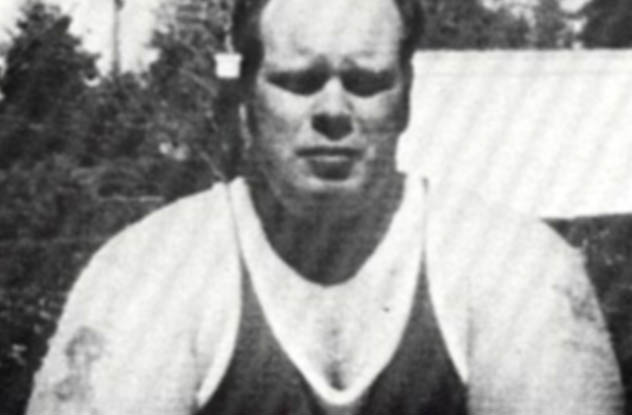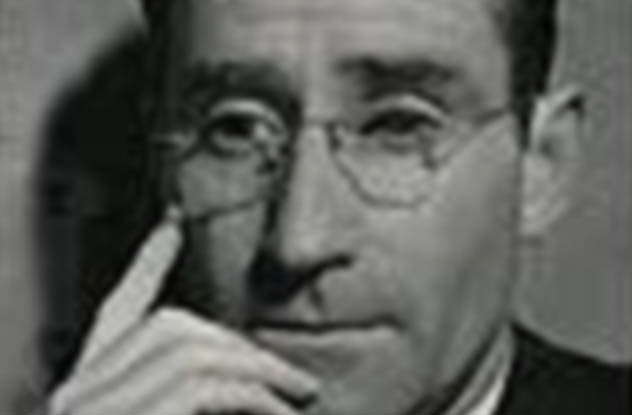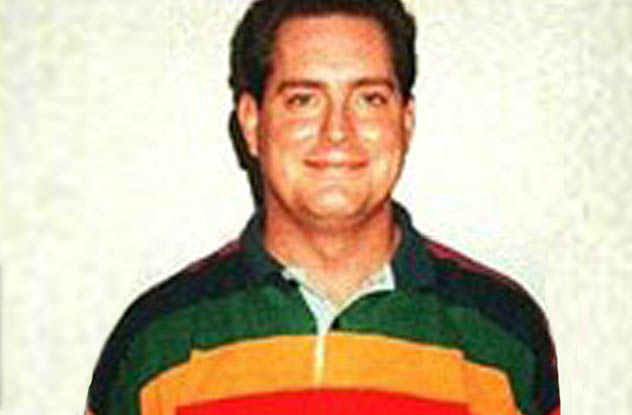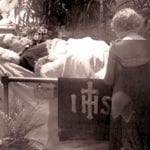 Music
Music  Music
Music  History
History 10 Less Than Jolly Events That Occurred on December 25
 Weird Stuff
Weird Stuff 10 Funny Ways That Researchers Overthink Christmas
 Politics
Politics 10 Political Scandals That Sent Crowds Into the Streets
 Weird Stuff
Weird Stuff Ten Bizarre Facts About The Doge Meme
 Our World
Our World 10 Ways Your Christmas Tree Is More Lit Than You Think
 Movies and TV
Movies and TV The 10 Coolest Stars to Set Sail on The Love Boat
 History
History 10 Things You Didn’t Know About the American National Anthem
 Technology
Technology Top 10 Everyday Tech Buzzwords That Hide a Darker Past
 Humans
Humans 10 Everyday Human Behaviors That Are Actually Survival Instincts
 Music
Music 10 Surprising Origin Stories of Your Favorite Holiday Songs
 History
History 10 Less Than Jolly Events That Occurred on December 25
 Weird Stuff
Weird Stuff 10 Funny Ways That Researchers Overthink Christmas
Who's Behind Listverse?

Jamie Frater
Head Editor
Jamie founded Listverse due to an insatiable desire to share fascinating, obscure, and bizarre facts. He has been a guest speaker on numerous national radio and television stations and is a five time published author.
More About Us Politics
Politics 10 Political Scandals That Sent Crowds Into the Streets
 Weird Stuff
Weird Stuff Ten Bizarre Facts About The Doge Meme
 Our World
Our World 10 Ways Your Christmas Tree Is More Lit Than You Think
 Movies and TV
Movies and TV The 10 Coolest Stars to Set Sail on The Love Boat
 History
History 10 Things You Didn’t Know About the American National Anthem
 Technology
Technology Top 10 Everyday Tech Buzzwords That Hide a Darker Past
 Humans
Humans 10 Everyday Human Behaviors That Are Actually Survival Instincts
10 Frightening Cases Of Workplace Violence
An employer’s absolute worst nightmare is a mentally unstable, dangerous employee. Sometimes, a reprimand or outright termination is not enough to resolve the problem. If an employee is fired and feels like they have nothing left to lose, they may decide that the only course of action is to attack their workplace.
10 Patrick Henry Sherrill
1986
The expression “going postal” describes someone who snaps and inflicts violence in a workplace environment. The word “postal” was chosen because an abnormally high number of violent incidents have featured United States Postal Service employees. The most notorious example involved Patrick Henry Sherrill, a 44-year-old mail carrier from Edmond, Oklahoma.
Sherrill was known to be a troublesome employee with a mediocre performance record, and he was reprimanded after a heated argument with two supervisors on August 19, 1986. At approximately 7:00 AM the following morning, Sherrill showed up at the post office in his uniform. He had three pistols with him, and his postal bag was filled with ammunition. Over the course of the next 15 minutes, Sherrill went on a murderous rampage, gunning down any employee who crossed his path.
After sealing off the exits, Sherrill ended up murdering 14 coworkers and wounding six others. When police arrived at the post office, Sherrill turned the gun on himself.
One of the two supervisors who reprimanded Sherrill the previous day was dead. The other supervisor overslept that morning and wound up missing the massacre.
While Sherrill’s rampage remains the deadliest workplace shooting committed by a postal employee, it would be far from the last . . .
9 Larry Jasion & Mark Richard Hilbun
1993

The phrase “going postal” first appeared in a St. Petersburg Times article from December 1993. The epidemic of postal violence started to get serious recognition on May 6 of that year, when two United States postal employees in two separate states shot up their workplaces within a few hours of each other.
At approximately 9:00 AM that morning, 45-year-old postal mechanic Larry Jasion entered a vehicle maintenance facility in Dearborn, Michigan carrying several guns. He murdered one coworker and wounded two others before shooting himself in the head. The previous day, Jasion had left work in a fit of anger because he felt his coworkers were playing their radio too loud, and one of the wounded victims had recently gotten a promotion Jasion wanted.
Remarkably, this incident repeated itself on the other side of the country four hours later. In Dana Point, California, 38-year-old Mark Richard Hilbun started the day off by visiting his mother’s house, stabbing her to death and killing her dog. Hilbun then went to the Dana Point post office, where he had been employed as a postal worker before being suspended for stalking and harassing a female coworker.
Hilbun entered the post office with a gun and opened fire, killing one employee and wounding another. Ironically, the only fatality, Charles Barbagallo, was one of Hilbun’s closest friends. Hilbun later shot and wounded three other innocent victims while attempting to escape. He was eventually apprehended and received nine life sentences.
8 Rosaire Bilodeau
1934

Even though postal employee violence started garnering attention during the 1980s and ’90s, one of the earliest examples occurred in Quebec in 1934. Rosaire Bilodeau had joined the postal service to work as a letter carrier after serving in World War I. Unfortunately, his traumatic experiences during the war seemed to have had a severe psychological effect on him, and when his employer laid him off, he suffered a complete mental breakdown.
Bilodeau often went back to the post office to beg for his job back, but they always rejected him. Finally, on October 25, Bilodeau returned and demanded a meeting with postmaster J.G.L. Morin.
Bilodeau entered Morin’s office and saw that he was already in a meeting with two employees, divisional superintendent Octave Fiset and senior mail clerk Moise Jolicoeur. Bilodeau shocked them all by pulling out a gun and firing two shots into Morin. When the other employees tried to wrest the gun away from Bilodeau, he fired into Fiset, killing him instantly. Bilodeau was eventually restrained and arrested, and Morin survived his wounds.
Under interrogation, Bilodeau made another shocking confession, leading police to a remote wooded area, where the bodies of five of Bilodeau’s relatives were found. Prior to his violent outburst at the post office, Bilodeau had lured his two older sisters, his niece, and two nephews to the location and shot them all to death. Bilodeau was charged with the murders and sentenced to be executed. He was hanged on June 14, 1935.
7 Fred Cowan
1977

33-year-old Fred Cowan lived in the small town of New Rochelle, New York and was employed by the Neptune Worldwide Moving Company. Cowan was a muscular, intimidating figure—a devout white supremacist who idolized Adolf Hitler and had an extensive collection of Nazi memorabilia at his home.
On the morning of February 14, 1977, Cowan showed up at the Neptune building with an assault rifle in hand. Two weeks earlier, he had been suspended by his supervisor for refusing an order. After walking inside the building, Cowan shot two employees to death.
Cowan shot two more employees before confronting a friend named Ronald Cowell. Cowan decided to spare Cowell’s life, telling him, “Go home and tell my mother not to come down to Neptune.” When a fifth victim fell, police surrounded the building, but Cowan fired his assault rifle through the window and shot two of them—a patrolman named Allen McLeod and another officer named Ray Saltiro.
The situation turned into an intense standoff, as police formulated a plan to rescue employees who were still hiding inside the building. Nearly 10 hours after the massacre started, an assault team heard a gunshot and decided to storm inside. They discovered that Cowan had taken his own life by shooting himself in the head.
Because of his neo-Nazi beliefs, most of Cowan’s victims had been minorities and his main target had been Norman Bing, the Jewish supervisor who had suspended him. However, Bing managed to stay hidden in his office throughout the entire ordeal. In total, Cowan murdered six people and wounded four others.
6 Leung Ying
1928

Leung Ying was a career criminal with a history of violence and drug use. In 1928, the 29-year-old Ying found legitimate employment as a cook at a ranch just outside Fairfield, California, where many Chinese laborers worked picking fruit in the orchards. Ying’s employer, Wong Gee, lived on the ranch with his family, but he unceremoniously fired Ying for allegedly trying to seduce his 16-year-old daughter Nellie. On the morning of August 22, while under the influence of narcotics, Ying decided to return to the ranch for a vicious murder spree which claimed the lives of 11 victims.
Ying first encountered Wong Gee in an underground room and shot him to death. He then moved onto the rest of the ranch, murdering Wong’s brother, three farm laborers, and a cook. Ying did not stop there. He next entered Wong Gee’s residence and shot the man’s wife as she clutched her 10-day-old baby. He then shot Nellie Wong and her four-year-old brother Johnnie.
Ammunition depleted, Ying grabbed an axe and butchered the newborn, along with three-year-old Willie Wong. The two remaining Wong children managed to stay hidden throughout this ordeal and survived.
Ying was captured by police the following day after escaping in one of Wong’s vehicles. He was sentenced to death for the murders, but on October 22, he committed suicide by hanging himself in his prison cell.
5 Alexander Kuzminykh
1998

Because of the high-stress nature of their profession, there are numerous cases of military personnel becoming unhinged and inflicting violence upon their fellow servicemen. One of the more unusual examples involved a 19-year-old Russian seaman named Alexander Kuzminykh, who came very close to causing a nuclear meltdown.
In 1998, Kuzminykh was assigned to a nuclear-powered submarine known as Vepr. He had a history of drug issues and psychological problems and was eventually detained in his quarters on disciplinary charges. The submarine was docked in Severomorsk on the evening of September 10 when Kuzminykh suddenly broke free and stabbed his guard to death with a chisel.
Kuzminykh then stole the guard’s assault rifle and went on a shooting spree throughout the submarine. Seven more crew members were killed before Kuzminykh sealed himself inside the torpedo compartment, threatening to set fire to the torpedoes. A detonation could have caused the nuclear reactor to go into meltdown, potentially turning the submarine into a “floating Chernobyl.”
Kuzminykh’s mother was brought in to convince her son to surrender, but all attempts were unsuccessful. After a 20-hour standoff, an antiterrorist unit was finally dispatched into the torpedo room. Kuzminykh wound up committing suicide before they arrived.
4 Kenneth Tornes
1996

In 1996, 32-year-old Kenneth Tornes had worked as a firefighter in Jackson, Mississippi for eight years. According to one coworker, “He was a perfect gentleman except when you got him talking about the chiefs.” Tornes was frequently at odds with his superiors in the department and had received several reprimands from them.
On April 25, Tornes shot his estranged wife before leaving their home and heading to his workplace with an assault rifle. However, unlike many workplace shootings, he did not just open fire on any random employee who happened to be in his way. At the time, there was a lot of political turmoil within the Jackson fire department and many of the supervisors and fire chiefs were just as unpopular with Tornes’ coworkers as with him. Tornes entered the firehouse with his weapon drawn, but made the calculated decision to spare his fellow firefighters, only wanting to attack the higher-ups.
Tornes went to the firehouse’s second floor and opened fire on specific targets as he moved from office to office. He wound up murdering two fire captains and two district chiefs. Two more supervisors were wounded but ultimately survived.
After leaving the firehouse, Tornes was chased by police for 16 kilometers (10 mi) before he was cornered at a suburban shopping mall. Tornes wounded a police officer during a brief shootout but was apprehended after taking a shot to the left eye. Tornes was sentenced to death for the murders. He died of a blood clot before he could be executed.
3 Verlin Spencer
1940

In many cases, school shooters turn out to be a disgruntled students, but it’s very rare to hear about a school principal turning to mass murder. However, one such incident occurred in 1940.
Verlin Spencer was the principal at South Pasadena Junior High School in California, where he often clashed with the school’s faculty because of his abrasive personality. Spencer was eventually fired from his job. He demanded an appeal hearing, which would be held at the school’s administration building on May 6.
Spencer showed up for the hearing, which was presided over by Superintendent George C. Bush and two other school officials. After a heated argument, Spencer suddenly pulled out a pistol and shot all three men through the heart. Spencer then fired a bullet into the school board secretary, which wound up paralyzing her.
When Spencer left the building, he discovered that his car’s battery had died, so he asked some nearby students for a jump-start. Little did they know that Spencer was heading to the junior high school to continue his violent rampage. When Spencer arrived at the school, he walked inside and shot two of the teachers to death. He tried to commit suicide by shooting himself in the stomach, but he survived.
Spencer was high on painkillers at the time of the shootings and may have been legally insane, but he still received a life sentence. After serving 30 years as a model inmate at San Quentin, he was paroled in 1970.
2 Mark Orrin Barton
1996

Mark Orrin Barton lived in Stockbridge, Georgia with his second wife, along with his 11-year-old son and 8-year-old daughter from a previous marriage. Barton worked as a day trader at two Atlanta trading firms, Momentum Securities, Inc. and the All-Tech Investment Group. In 1996, he lost $105,000 making bad investments and had his trading privileges revoked as a result.
On July 29, he made an appointment to speak with the manager at the Momentum Securities office and chatted with some of the other day traders while waiting. When the manager failed to arrive, Barton suddenly pulled out two pistols and opened fire. He wound up murdering four people before walking across the street to the All-Tech Investment Group office.
When Barton arrived at All-Tech, a similar scenario unfolded. Barton chatted with the manager and some other employees for a few minutes before pulling out his weapons again. This time, five people were shot to death. A total of 22 additional people were wounded in Barton’s shooting sprees.
Barton fled the scene, but authorities later tracked him down to a gas station in Acworth, where he responded by turning the gun on himself. However, it turns out that Barton’s coworkers were not the only victims of his horrific rampage. When authorities searched Barton’s home, they discovered that he had bludgeoned his wife and two children to death with a hammer.
Incidentally, Barton had also been the prime suspect in the murders of his first wife and mother-in-law, who had both been bludgeoned to death in 1993. However, Barton left behind a farewell note denying that he’d killed them, so those murders officially remain unsolved.
1 David Burke
1987

It’s shocking to look back at a pre-9/11 world and realize how much easier it used to be for someone to deliberately crash a commercial airliner. One of the most shocking examples involved a disgruntled 35-year-old airline worker named David Burke, who brought down a plane and murdered several innocent people to get revenge on his employer.
Burke was employed by USAir as a ticket agent until his supervisor, Raymond Thompson, fired him for theft. After Thompson refused to give Burke another chance, Burke showed up at Los Angeles International Airport on December 7 and purchased a ticket for Pacific Southwest Airlines Flight 1771 to San Francisco. Burke had used his still-active employee credentials to determine that Thompson would be on the flight, and he managed to bypass security and smuggle a .44 Magnum onto the plane.
Shortly after the plane took off, the cockpit’s flight recorder picked up gunshots. Then came the sound of David Burke’s voice. It wasn’t long before Flight 1771 crashed into a hillside in San Luis Obispo County, killing all 43 people on board, including Burke and Thompson.
At the crash site, an airsickness bag was found containing a message which Burke had written for his former supervisor. It read: “I asked for some leniency for my family, remember. Well, I got none. And you’ll get none.”
It’s believed that Burke shot Thompson before murdering the pilots and deliberately crashing the plane. Because of this tragedy, new laws were passed subjecting airline employees to security screenings before a flight and seizing their credentials upon termination.
Robin Warder is a budding Canadian screenwriter who has used his encyclopedic movie knowledge to publish numerous articles at Cracked.com. He is also the co-owner of a pop culture website called The Back Row and recently worked on a sci-fi short film called Jet Ranger of Another Tomorrow. Feel free to contact him here.








